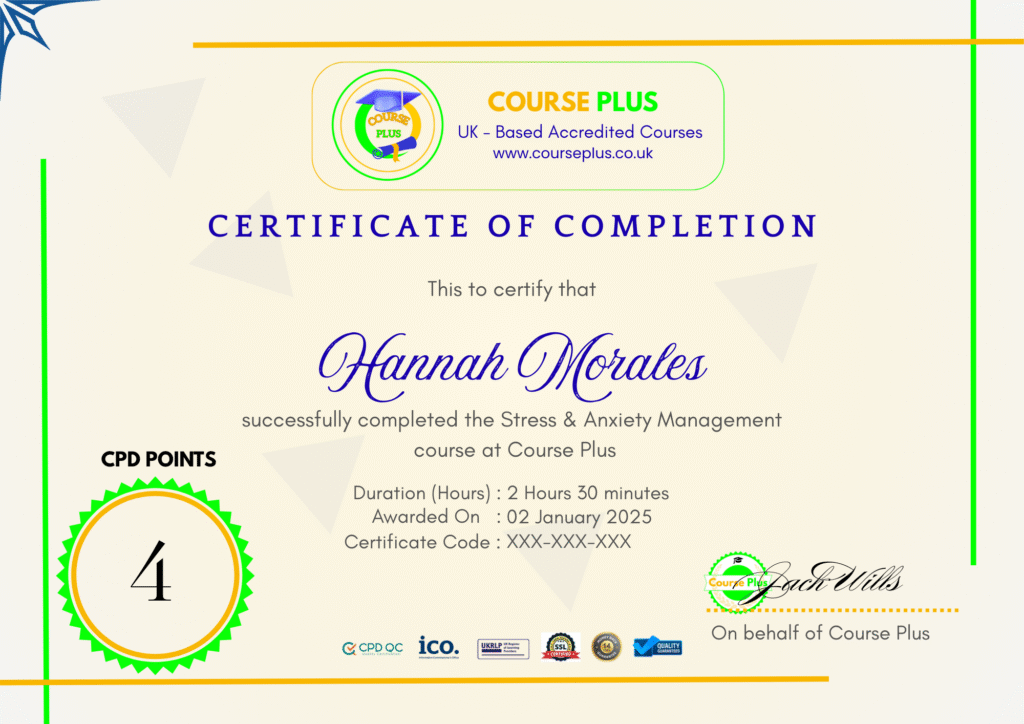Learn Python for Data Science & Machine Learning from A-Z




Course Overview:
The “Learn Python for Data Science & Machine Learning from A-Z” course on Course Plus is a comprehensive guide for mastering Python and its applications in Data Science and Machine Learning. From foundational Python programming to advanced concepts like PCA, Decision Trees, and Random Forests, this course covers it all. With hands-on projects like income prediction and voice gender recognition, learners gain practical experience. Designed for aspiring data scientists, analysts, and enthusiasts, this course ensures you’re job-ready with skills in exploratory data analysis, feature engineering, and model evaluation. Whether you’re just starting or looking to enhance your career, this course provides everything you need to succeed in the dynamic field of data science.
Why Enroll in this Course?
Enroll in the “Learn Python for Data Science & Machine Learning from A-Z” course on Course Plus to unlock the potential of Python in the booming field of data science and machine learning. This course is perfect for beginners and professionals alike, offering step-by-step guidance from Python basics to implementing cutting-edge algorithms. You’ll learn how to analyze data, build predictive models, and visualize insights using libraries like NumPy, Pandas, and Matplotlib. With real-world projects and a focus on industry-relevant tools like Jupyter and Google Colab, you’ll gain practical experience. Designed to cater to the demand for data science professionals, this course provides the tools and confidence needed to excel in the competitive job market. By joining, you’ll be investing in a future-proof skill set for one of the most in-demand fields globally.
Investment Value:
- Lifetime access to comprehensive learning modules on Python, data science, and machine learning.
- Hands-on projects with real-world applications to enhance practical skills.
- Access to industry-standard tools like Jupyter, Google Colab, and scikit-learn.
- Expert insights on career building, including freelancing and personal branding.
- Certification upon completion to showcase your expertise to employers.
Technical Specifications:
- Device: Compatible with PCs, laptops, and tablets.
- Software: Python 3.x, Jupyter Notebook, and Google Colab.
- Prerequisite: Internet connection and a basic understanding of mathematics.
- Support: 24/7 course assistance and community access.
Learning Outcome
- Master Python programming for data science and machine learning.
- Analyze data effectively using NumPy and Pandas.
- Visualize data with Matplotlib and other visualization libraries.
- Implement machine learning models like KNN, Decision Trees, and SVMs.
- Understand and apply deep learning concepts.
- Perform feature engineering and exploratory data analysis.
- Gain proficiency in Jupyter and Google Colab.
- Build practical projects, including voice gender recognition and income prediction.
- Develop skills to secure data science jobs or freelance opportunities.
- Understand personal branding, resume building, and networking for career growth.
Conclusion
Join the “Learn Python for Data Science & Machine Learning from A-Z” course on Course Plus today and transform your passion for data into a thriving career. With comprehensive lessons, practical projects, and expert guidance, you’ll gain the skills and confidence to excel in data science and machine learning. Enroll now and take the first step toward your data-driven future!
Next Steps:
- Register on Course Plus platform
- Access course materials
- Join community discussions
- Earn certification
Course Curriculum
Introduction to Python for Data Science and Machine Learning from A-Z
-
Who is this course for?
03:00 -
Data Science + Machine Learning Marketplace
07:00 -
Data Science Job Opportunities
05:00 -
Data Science Job Roles
11:00 -
What is a Data Scientist?
17:00 -
How To Get a Data Science Job
19:00 -
Data Science Projects Overview
12:00
Data Science and Machine Learning Concepts
-
Why We Use Python
04:00 -
What is Data Science?
14:00 -
What is Machine Learning?
15:00 -
Machine Learning Concepts and Algorithms
15:00 -
What is Deep Learning?
10:00 -
Machine Learning vs Deep Learning
12:00
Python For Data Science
-
What is Programming?
07:00 -
Why Python for Data Science?
05:00 -
What is Jupyter?
04:00 -
What is Google Colab?
04:00 -
Jupyter Notebook
19:00 -
Python Variables, Booleans
12:00 -
Getting Started with Google Colab
10:00 -
Python Operators
26:00 -
Python Numbers and Booleans
08:00 -
Python Strings
14:00 -
Python Conditional Statements
14:00 -
Python For Loops and While Loops
09:00 -
Python Lists
06:00 -
More about Lists
16:00 -
Python Tuples
12:00 -
Python Dictionaries
21:00 -
Python Sets
10:00 -
Compound Data Types and When to use each one?
13:00 -
Python Functions
15:00 -
Object-Oriented Programming in Python
19:00
Statistics for Data Science
-
Intro to Statistics
08:00 -
Descriptive Statistics
07:00 -
Measure of Variability
13:00 -
Measure of Variability Continued
10:00 -
Measures of Variable Relationship
08:00 -
Inferential Statistics
16:00 -
Measure of Asymmetry
02:00 -
Sampling Distribution
08:00
Probability and Hypothesis Testing
-
What Exactly is Probability?
04:00 -
Expected Values
03:00 -
Relative Frequency
06:00 -
Hypothesis Testing Overview
10:00
NumPy Data Analysis
-
Intro NumPy Array Data Types
13:00 -
NumPy Arrays
09:00 -
NumPy Arrays Basics
12:00 -
NumPy Array Indexing
10:00 -
NumPy Array Computations
06:00 -
Broadcasting
05:00
Pandas Data Analysis
-
Intro To Pandas
16:00 -
Intro To Pandas Continued
19:00
Python Data Visualization
-
Data Visualization Overview
25:00 -
Different Data Visualization Libraries in Python
13:00 -
Python Data Visualization Implementation
Introduction to Machine Learning
-
Intro to Machine Learning
27:00
Data Loading and Exploration
-
Exploratory Data Analysis
14:00
Data Cleaning
-
Feature Scaling
08:00 -
Data Cleaning
08:00
Feature Selecting and Engineering
-
Feature Engineering
07:00
Linear and Logistic Regression
-
Linear Regression Intro
09:00 -
Gradient Descent
06:00 -
Linear Regression + Correlation Methods
27:00 -
Linear Regression Implemenation
06:00 -
Logistic Regression
04:00
K Nearest Neighbors
-
KNN Overview
04:00 -
Parametic vs Non-Parametic Models
04:00 -
EDA on Iris Dataset
23:00 -
KNN – Intuition
03:00 -
Implement the KNN algorithm from scratch
12:00 -
Compare the Reuslt with Sklearn Library
04:00 -
Hyperparameter tuning using the cross-validation
11:00 -
The decision boundary visualization
05:00 -
Manhattan vs Euclidean Distance
12:00 -
Feature scaling in KNN
07:00 -
Curse of dimensionality
09:00 -
KNN use cases
04:00 -
KNN pros and cons
06:00
Decision Trees
-
Decision Trees Section Overview
05:00 -
EDA on Adult Dataset
17:00 -
What is Entropy and Information Gain?
22:00 -
The Decision Tree ID3 algorithm from scratch Part 1
12:00 -
The Decision Tree ID3 algorithm from scratch Part 2
08:00 -
The Decision Tree ID3 algorithm from scratch Part 3
05:00 -
ID3 – Putting Everything Together
22:00 -
Evaluating our ID3 implementation
17:00 -
Compare with Sklearn implementation
09:00 -
Visualizing the tree
11:00 -
Plot the Important Features
06:00 -
Decision Trees Hyper-parameters
12:00 -
Pruning
18:00 -
[Optional] Gain Ration
03:00 -
Decision Trees Pros and Cons
08:00 -
Project] Predict whether income exceeds $50K/yr – Overview
03:00
Ensemble Learning and Random Forests
-
Ensemble Learning Section Overview
04:00 -
What is Ensemble Learning?
14:00 -
What is Bootstrap Sampling?
09:00 -
What is Bagging?
06:00 -
Out-of-Bag Error (OOB Error)
08:00 -
Implementing Random Forests from scratch Part 1
23:00 -
Implementing Random Forests from scratch Part 2
07:00 -
Compare with sklearn implementation
04:00 -
Random Forests Hyper-Parameters
05:00 -
Random Forests Pros and Cons
06:00 -
What is Boosting?
05:00 -
AdaBoost Part 1
05:00 -
AdaBoost Part 2
15:00
Support Vector Machines
-
SVM Outline
06:00 -
SVM intuition
12:00 -
Hard vs Soft Margins
14:00 -
C hyper-parameter
05:00 -
Kernel Trick
13:00 -
Kernel Types
19:00 -
SVM with Linear Dataset (Iris)
14:00 -
SVM with Non-linear Dataset
13:00 -
SVM with Regression
06:00 -
[Project] Voice Gender Recognition using SVM
05:00
K-Means
-
Unsupervised Machine Learning Intro
21:00 -
Unsupervised Machine Learning Continued
21:00 -
Data Standardization
20:00
PCA
-
PCA Section Overview
06:00 -
What is PCA?
10:00 -
PCA Drawbacks
04:00 -
PCA Algorithm Steps (Mathematics)
14444444:00 -
Covariance Matrix vs SVD
05:00 -
PCA – Main Applications
03:00 -
PCA – Image Compression
28:00 -
PCA Data Preprocessing
15:00 -
PCA – Biplot and the Screen Plot
18:00 -
PCA – Feature Scaling and Screen Plot
10:00 -
PCA – Supervised vs Unsupervised
05:00 -
PCA – Visualization
08:00
Data Science Career
-
Creating A Data Science Resume
07:00 -
Data Science Cover Letter
04:00 -
How to Contact Recruiters
05:00 -
Getting Started with Freelancing
05:00 -
Top Freelance Websites
06:00 -
Personal Branding
05:00 -
Networking
04:00 -
Importance of a Website
03:00
Student Ratings & Reviews

-
LevelExpert
-
Duration24 hours 23 minutes
-
Last UpdatedSeptember 30, 2025
A course by
Material Includes
- 24/7 Support
- Online e-learning platform
- Interactive modules
- Video-based instruction
- Practical exercises
- Certification (on demand)
- Assessment on demand
Requirements
- Minimum age: 18 years
- Access to a computer with internet
- Willingness to learn and engage
Target Audience
- Professionals looking to transition into data science or machine learning.
- Beginners with no prior coding experience but a passion for data.
- Students pursuing careers in tech, analytics, or artificial intelligence.
- Freelancers aiming to offer data-driven solutions.
- Enthusiasts who want to explore Python for data analysis.
- Analysts upgrading their skills with machine learning techniques.


